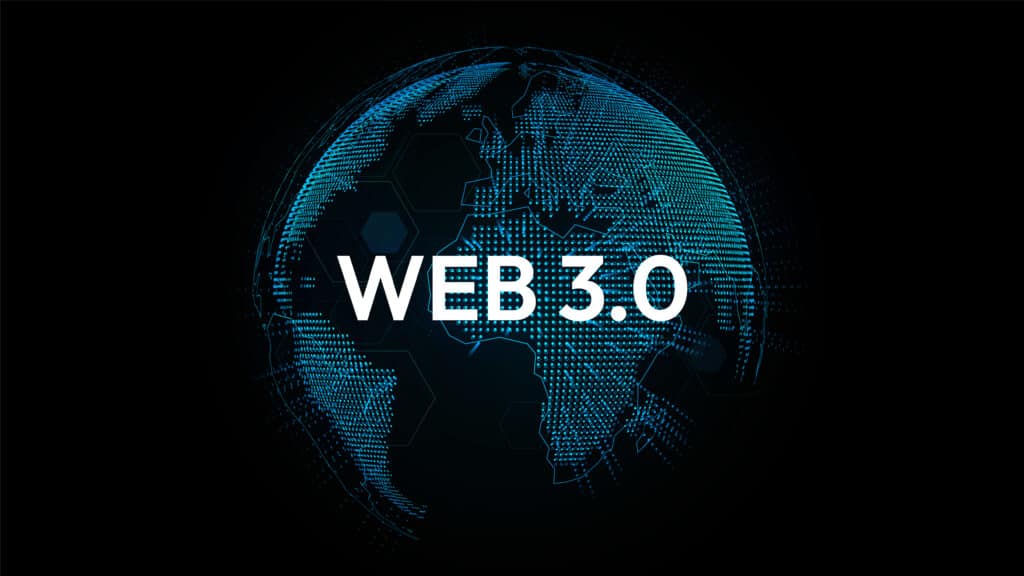The advent of Web3.0, often referred to as the next generation of the internet, promises a profound shift in how we interact online, with a particular focus on user privacy, data sovereignty, and decentralization. One of the core technologies enabling Web3.0 is blockchain, which is set to revolutionize how individuals control their personal data and online interactions. In contrast to the centralized web infrastructure of Web2.0—where corporations control vast amounts of personal data—blockchain’s decentralized and immutable nature offers a more secure, transparent, and user-centric internet.
As Web3.0 continues to evolve, blockchain technology will play a pivotal role in promoting privacy protection and data sovereignty by giving individuals control over their data, enabling privacy-preserving technologies, and reducing reliance on centralized entities. In this article, we’ll explore how blockchain technology is driving these shifts and what that means for the future of the internet.
1. The Web2.0 vs Web3.0 Paradigm Shift
A. The Centralized Web (Web2.0)
In the current Web2.0 ecosystem, the internet is largely controlled by a handful of centralized entities such as Facebook, Google, and Amazon. These corporations collect vast amounts of personal data from users, often without explicit consent or transparency. This model has led to significant privacy concerns, data breaches, and increasing user distrust.
Data ownership is generally in the hands of companies rather than the users who generate it. Consumers have limited control over how their data is used, shared, or monetized, and this centralized control leads to privacy risks, such as identity theft, unauthorized surveillance, and algorithmic manipulation.
B. The Decentralized Web (Web3.0)
Web3.0 aims to address these challenges by introducing a decentralized internet, where data is distributed across a network of computers (nodes) rather than stored in central servers controlled by a few entities. Blockchain technology underpins Web3.0, enabling the creation of decentralized applications (dApps), smart contracts, and the ability for users to have ownership and control over their own data.
Unlike Web2.0, where data flows through centralized platforms, Web3.0 ensures that individuals can share their data on their own terms, with control over what is shared, how it is shared, and with whom it is shared. Through cryptographic methods, Web3.0 provides a more secure, transparent, and user-driven experience.
2. Blockchain’s Role in Privacy Protection
One of the most significant aspects of blockchain technology is its ability to offer privacy protection while maintaining transparency. Blockchain’s decentralized nature allows users to manage their data in a secure way, and its immutability ensures that once data is recorded, it cannot be tampered with. This combination of features makes it ideal for addressing privacy concerns in Web3.0.
A. Decentralized Identity Management (DID)
One of the primary ways blockchain promotes privacy protection is through Decentralized Identity (DID) systems. In traditional systems, user identities are controlled by centralized authorities (such as government agencies, corporations, or social media platforms), which have access to vast amounts of personal data. Blockchain-based DID solutions, however, enable users to own and control their own identities without needing to rely on a central authority.
A DID is a digital identity that is created and managed on the blockchain, enabling users to maintain full control over their personal information. For example, users could create an identity that is cryptographically verified on the blockchain and use it to authenticate themselves across multiple platforms without revealing sensitive data such as their name, address, or email.
Example:
SelfKey and uPort are two blockchain-based platforms that allow individuals to manage their digital identities. These platforms give users control over their personal data, allowing them to decide what information to share, with whom, and for how long.
B. Privacy-Preserving Technologies (Zero-Knowledge Proofs)
Another important tool blockchain offers for privacy protection is Zero-Knowledge Proofs (ZKPs). ZKPs are cryptographic methods that allow one party to prove to another party that a statement is true without revealing any specific information about the statement itself. For instance, a user could prove they are over 18 years old without disclosing their exact birthdate.
In the context of Web3.0, ZKPs can be used to ensure privacy-preserving transactions while maintaining transparency and trust within a blockchain network. This means that users can interact with decentralized applications (dApps) and make transactions without revealing sensitive personal information.
Example:
Zcash and Monero are cryptocurrencies that use ZKPs to enable private transactions. These cryptos ensure that transaction details such as the sender, recipient, and amount are obscured from the public blockchain.
3. Empowering Data Sovereignty with Blockchain
Data sovereignty refers to the concept that individuals and entities should have control over their data, including where it is stored, who has access to it, and how it is used. With the rise of blockchain, individuals can have greater ownership and control over their own data, allowing them to assert data sovereignty in a way that was never possible under centralized models.
A. Self-Managed Data with Blockchain
One of the most transformative aspects of blockchain is its ability to enable self-managed data. Blockchain allows individuals to store and control their personal data on their own devices or private blockchain networks. This data is only shared when explicitly authorized by the user, giving them full control over who has access to it and for how long.
For example, rather than handing over personal information to centralized platforms (like Facebook or Google), users can store their data on the blockchain and decide when to share it with third parties. This model aligns with the right to data privacy and ensures that users can maintain control over their personal information.
Example:
Ocean Protocol is a blockchain-based platform designed to help individuals and organizations control and monetize their data. Ocean Protocol enables data owners to securely share their data with others while ensuring they retain control and ownership, which helps ensure data sovereignty.
B. Tokenized Data and Monetization
Blockchain allows individuals to tokenize their data, turning it into digital assets that can be bought, sold, or traded on blockchain networks. This not only helps in asserting data sovereignty but also provides a way for individuals to monetize their data on their own terms, rather than having to give it away for free to centralized platforms.
For example, users could choose to sell anonymized data to organizations or companies, with full control over who gets access and how much they are paid for their data. This approach contrasts sharply with the current model, where large corporations harvest vast amounts of data from users without offering compensation.
Example:
Brave Browser integrates blockchain with its browser to allow users to earn Basic Attention Tokens (BAT) by watching privacy-respecting ads. Users can control how much data they are willing to share and receive tokens as compensation, ensuring both privacy and data sovereignty.
4. Decentralized Finance (DeFi) and Data Privacy
One of the most exciting areas where blockchain is driving Web3.0 innovation is in Decentralized Finance (DeFi). DeFi refers to a set of financial services and applications built on blockchain technology that operate without the need for traditional financial intermediaries such as banks, brokers, or payment processors.
A. Privacy in Financial Transactions
In traditional finance, user privacy is often compromised as financial institutions gather and store sensitive data about individuals. Blockchain enables peer-to-peer (P2P) transactions that are more private and secure, with individuals retaining control over their financial information.
Moreover, DeFi applications can incorporate advanced privacy-preserving techniques such as ZKPs and Ring Signatures to ensure that users’ financial activities remain private, even while they interact with public blockchain networks. This would empower users to engage in financial activities like lending, borrowing, and trading, while preserving their privacy.
Example:
Aave and Compound are decentralized lending and borrowing platforms where users can engage in transactions without relying on centralized institutions, giving them more control over their financial data. These platforms are built on Ethereum and can integrate privacy-enhancing technologies in the future.

5. Blockchain as a Tool for Digital Rights and Consent
With Web3.0, users will have the ability to assert their digital rights in ways that were not possible in Web2.0. Blockchain can store digital consent in a transparent, immutable, and tamper-proof way, allowing users to control how their data is used and by whom.
A. Consent Management via Blockchain
Using blockchain, users can provide and revoke consent for their data to be accessed or processed. Once consent is given, it can be securely recorded on the blockchain, and businesses must respect the conditions of that consent. This system can be especially valuable in compliance-heavy industries like healthcare or financial services, where data privacy and consent are paramount.
Example:
Consentium is a blockchain platform designed to help users manage their consent for data collection and sharing. By using blockchain, users can track and control how their personal data is accessed and by whom, ensuring that their rights are always respected.
Conclusion: A New Era of Privacy and Data Sovereignty
As we transition into the Web3.0 era, blockchain will be a driving force behind the movement towards greater privacy protection and data sovereignty. By decentralizing control over data, empowering users with self-managed digital identities, enabling privacy-preserving technologies like ZKPs, and providing a means for individuals to monetize their data, blockchain is offering a new framework for managing and protecting personal information on the internet.
In this new era, individuals will no longer be passive data providers but active custodians of their digital lives, with the power to control, share, and monetize their data on their own terms. As Web3.0 evolves, blockchain will continue to shape a more secure, private, and user-centric internet that better serves the needs and rights of individuals in the digital age.
















































